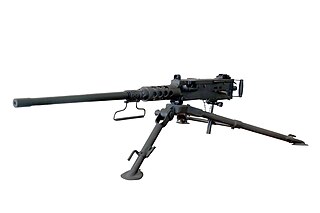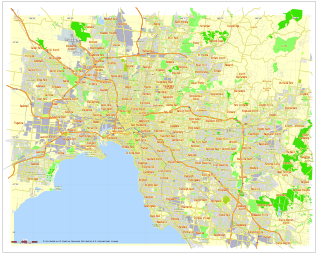
HMAS Quiberon (G81/D20/D281/F03) was a Q-class destroyer of the Royal Australian Navy (RAN). Although built for the Royal Navy and remaining British property until 1950, Quiberon was one of two Q-class destroyers commissioned into the RAN during World War II. She was passed into full RAN ownership in 1950, and converted into an anti-submarine frigate.
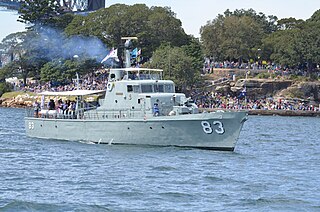
HMAS Advance was an Attack-class patrol boat of the Royal Australian Navy (RAN). Constructed during 1967 and commissioned into the RAN in 1968, Advance operated from Darwin and patrolled northern Australian waters.

HMAS Melbourne (R21) was a Majestic-class light aircraft carrier of the Royal Australian Navy (RAN). Operating from 1955 until 1982, she was the third and final conventional aircraft carrier to serve in the RAN. Melbourne was the only Commonwealth naval vessel to sink two friendly warships in peacetime collisions.

The Fremantle-class patrol boats were coastal patrol vessels operated by the Royal Australian Navy (RAN) from 1979 to 2007. Designed by British shipbuilder Brooke Marine and constructed in Australia by North Queensland Engineers and Agents, the Fremantle class were larger, more powerful, and more capable than the preceding Attack class, and the two primary patrol boat bases required infrastructure upgrades to support them. Although up to 30 vessels were planned, fifteen were ordered and constructed, with an unexercised option for five more.
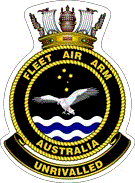
The Fleet Air Arm (FAA), known formally as the Australian Navy Aviation Group, is the division of the Royal Australian Navy (RAN) responsible for the operation of aircraft. The FAA was founded in 1947 following the purchase of two aircraft carriers from the Royal Navy. FAA personnel fought in the Korean War and the Vietnam War, and participated in later conflicts and operations from host warships.

The Canberra class is a ship class of two Landing Helicopter Dock (LHD) ships built for the Royal Australian Navy (RAN). Planning to upgrade the navy's amphibious fleet began in 2000, based on Australian experiences leading the International Force for East Timor peacekeeping operation. With a new climate for growing Australian Navy spending, a desire existed for forward defence capability for landing and supporting troops on Asian territory, that had never existed in Australian history, even with the old Majestic-class light fleet carriers, HMAS Melbourne and HMAS Sydney in the 1970s. In 2004, French company Direction des Constructions Navales (DCN) and Spanish company Navantia were invited to tender proposals, with DCN offering the Mistral-class amphibious assault ship and Navantia proposing the "Buque de Proyección Estratégica" design. The Spanish design was selected in 2007, with Navantia responsible for construction of the ships from the keel to the flight deck, and BAE Systems Australia handling the fabrication of the superstructure and fitting out.

HMAS Albatross is the main naval air station for the Royal Australian Navy's (RAN) aviation branch, the Fleet Air Arm. The base, located near Nowra, New South Wales, was formally established in May 1942 as Royal Australian Air Force (RAAF) base RAAF Nowra, then was transferred to the Royal Navy as HMS Nabbington in 1944, and operated as a naval air station until it was decommissioned in late 1945. In 1948, the airfield was commissioned into the RAN as HMAS Albatross, as the primary shore base for the Fleet Air Arm. Since 2011, four squadrons of the Fleet Air Arm operate from Albatross. The current commander of the base is Captain Fiona Sneath, RAN.

No. 11 Squadron is a Royal Australian Air Force (RAAF) maritime patrol squadron based at RAAF Base Edinburgh. It was formed in 1939 and has seen active service in World War II, East Timor, the War on Terrorism and the 2003 Gulf War. The squadron became known to the public through its participation in the Great Southern Ocean rescues of wrecked sailors, such as Tony Bullimore and Isabelle Autissier.

No. 9 Squadron was a unit of the Royal Australian Air Force (RAAF). The squadron was formed in early 1939 and saw active service in World War II as a fleet co-operation unit providing aircrews for seaplanes operating off Royal Australian Navy cruisers. It was disbanded in late 1944, but was re-raised in 1962 and later became an Army co-operation unit, flying helicopters in support of Australian troops during the Vietnam War. The squadron was disbanded in 1989 when the RAAF transferred its battlefield helicopters to the Australian Army's aviation regiments.

No. 41 Squadron was a Royal Australian Air Force (RAAF) transport squadron of World War II. It was formed in August 1942 and operated flying boats in the South West Pacific area. The squadron was disbanded in September 1945.

Australia was a member of the international coalition which contributed military forces to the 1991 Gulf War, also known as Operation Desert Storm. More than 1800 ADF personnel were deployed to the Persian Gulf from August 1990 to September 1991, with Australia's deployment continuing until 1993. In August 1990, two frigates HMAS Adelaide and HMAS Darwin and the replenishment ship HMAS Success left for the Persian Gulf. HMAS Success had no air defences so the Army 16th Air Defence Regiment deployed on this ship. On 3 December 1990, HMAS Brisbane and HMAS Sydney (IV) relieved HMAS Adelaide and HMAS Darwin. On 26 January 1991, HMAS Westralia replaced HMAS Success. A Navy Clearance diving team was also deployed for explosive ordnance and demolition tasks. Australian ships were in danger of mines and possible air attacks. In a number of recorded incidents, HMAS Brisbane encountered free floating mines, on one occasion narrowly avoiding a collision. Both HMA Ships Brisbane and Sydney encountered significant air threat warnings from Iran and Iraq throughout the initial period of the commencement of the Desert Storm Campaign. The detection of land based silkworm missiles from Iran throughout the campaign also added to the challenges for both crews as well as the multi-national Naval Forces.

Camden Airport is an aerodrome located on the outskirts of Sydney 1 nautical mile northwest of Camden, New South Wales, Australia. The airport is located approximately 60 km (37 mi) from Sydney's central business district. Camden is used as a general aviation overflow airport for the busier Bankstown Airport; and provides facilities for gliding and ballooning. The aerodrome has one grass- and one paved runway and two glider airstrips. It is in the south-west corner of the designated Sydney flight training area.
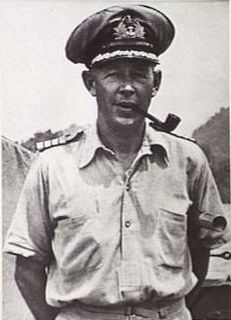
Vice Admiral Sir Roy Russell Dowling, was a senior commander in the Royal Australian Navy (RAN). He served as Chief of Naval Staff (CNS), the RAN's highest-ranking position, from 1955 until 1959, and as Chairman of the Chiefs of Staff Committee (COSC), forerunner of the role of Australia's Chief of the Defence Force, from 1959 until 1961.

HMS Tabard was a British submarine of the third group of the T class. She was built by Scotts, Greenock, and launched on 21 November 1945. So far she has been the only boat of the Royal Navy to bear the name Tabard, after the item of clothing. Having been launched after the war, she was selected, along with a number of boats of her class, to try out new streamlining techniques based on the German Type XXIII submarine. In May 1963, she was involved in a collision with HMAS Queenborough, and on 10 February 1964 she underwent exercises with HMAS Melbourne and HMAS Voyager in the hours before their collision. When she returned to the UK, she became the static training submarine at the shore establishment HMS Dolphin, until 1974 when she was sold and broken up.
Coastal Forces was a division of the Royal Navy established during World War II. It consisted of small coastal defence craft such as motor launches, submarine chasers, air-sea rescue launches, motor gun boats and motor torpedo boats. It did not include minesweepers, naval trawlers or landing craft. This article is about the equivalent boats used in the Royal New Zealand Navy (RNZN).
Coastal Forces was a division of the Royal Navy established during World War II. It consisted of small coastal defence craft such as motor launches, submarine chasers, air-sea rescue launches, motor gun boats and motor torpedo boats. It did not include minesweepers, trawlers or landing craft. This article is about the equivalent boats used by the Royal Australian Navy (RAN).
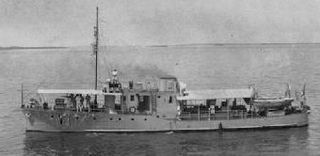
HMAS Vigilant was an auxiliary patrol boat serving with the Royal Australian Navy during the Second World War. Notably it was the 120th ship built by the Cockatoo Island Dockyard and the first aluminium ship built in Australia.

Vice Admiral Sir Henry Mackay Burrell, was a senior commander in the Royal Australian Navy (RAN). He served as Chief of the Naval Staff (CNS) from 1959 to 1962. Born in the Blue Mountains, Burrell entered the Royal Australian Naval College in 1918 as a 13-year-old cadet. His first posting at sea was aboard the cruiser HMAS Sydney. During the 1920s and 1930s, Burrell served for several years on exchange with the Royal Navy, specialising as a navigator. During World War II, he filled a key liaison post with the US Navy, and later saw action as commander of the destroyer HMAS Norman, earning a mention in despatches.
HMAS Air Faith (909) was a Miami-class 63-foot Air-Sea Rescue Boat that was operated by the Royal Australian Navy during World War II, and later by the Royal Australian Air Force.


